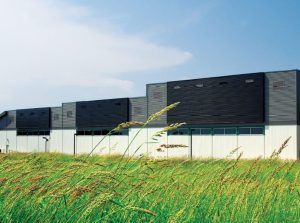LEED (Leadership in Energy and Environmental Design) Certified Buildings
The University of Maine is dedicated to sustainability through research, innovation, and the implementation of various projects. UMaine has designed and constructed several LEED Certified buildings on campus. Information about LEED Buildings on campus can be found on the Office of Sustainability website. For more information about LEED buildings at the University of Maine, contact the Office of Sustainability at 207-581-1571 or sustainability@maine.edu.
U.S. Green Building Council
The U.S. Green Building Council (USGBC) is committed to transforming how buildings are designed, constructed, and operated through LEED, the most widely used green building system with more than 100,000 buildings participating today. Their mission is to transform how buildings and communities are designed, built, and operated to become more economically, environmentally, and socially sustainable in order to improve overall quality of life.
LEED (Leadership in Energy and Environmental Design)
Traditionally constructed buildings consume energy and resources at an unsustainable rate, but we have access to the technology, resources, and innovations to do better. LEED provides a framework for healthy, efficient, carbon and cost-saving green buildings. LEED certification is a globally recognized symbol of sustainability achievement, and it is backed by an entire industry of committed organizations and individuals. Improving energy efficiency and decreasing energy use in buildings and infrastructure are important for addressing climate change, as well as enhancing both economic and environmental resilience.
Mission of LEED
- Reduce contributions to global climate change
- Enhance individual human health
- Protect and restore water resources
- Protect and enhance biodiversity and ecosystem services
- Promote sustainable and regenerative material cycles
- Enhance community quality of life
LEED Certification
LEED is a holistic system that doesn’t simply focus on one element of a building such as energy, water or health, but takes a wider view, factoring in all of the critical elements that work together to create the best building possible. In order for a project to earn a LEED certification, it must adhere to certain prerequisites and credits related to carbon, energy, water, waste, transportation, materials, and health. Projects must be reviewed and verified by the USGBC, and receive their level of certification according to a points system: Certified (40-49 points), Silver (50-59 points), Gold (60-79 points), and Platinum (80+ points).
The breakdown of LEED credits are as follows:
- 35% related to climate change
- 20% directly impact human health
- 15% impact water resources
- 10% affect biodiversity
- 10% relate to the green economy
- 5% impact community
- 5% impact natural resources










